Navigation
Install the app
How to install the app on iOS
Follow along with the video below to see how to install our site as a web app on your home screen.
Note: This feature may not be available in some browsers.
More options
You are using an out of date browser. It may not display this or other websites correctly.
You should upgrade or use an alternative browser.
You should upgrade or use an alternative browser.
Air Ministry Plane pixs
- Thread starter Tieleader
- Start date
Ad: This forum contains affiliate links to products on Amazon and eBay. More information in Terms and rules
More options
Who Replied?- Thread starter
- #22
another twenty.
Attachments
-
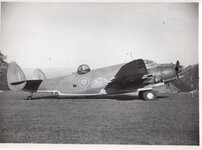 img730.jpg1.5 MB · Views: 128
img730.jpg1.5 MB · Views: 128 -
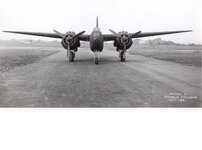 img731.jpg1.2 MB · Views: 146
img731.jpg1.2 MB · Views: 146 -
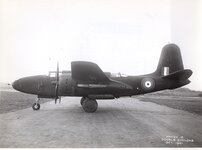 img732.jpg1.2 MB · Views: 141
img732.jpg1.2 MB · Views: 141 -
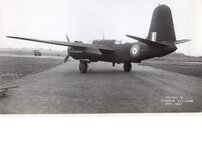 img733.jpg1.1 MB · Views: 141
img733.jpg1.1 MB · Views: 141 -
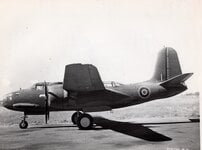 img734.jpg1.5 MB · Views: 122
img734.jpg1.5 MB · Views: 122 -
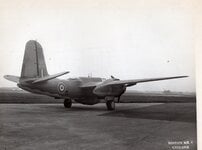 img735.jpg1.2 MB · Views: 136
img735.jpg1.2 MB · Views: 136 -
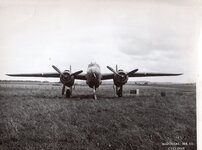 img736.jpg1.7 MB · Views: 134
img736.jpg1.7 MB · Views: 134 -
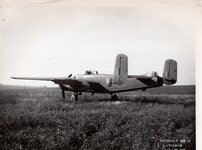 img737.jpg1.7 MB · Views: 134
img737.jpg1.7 MB · Views: 134 -
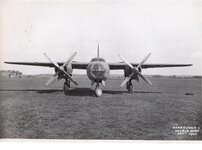 img738.jpg1.5 MB · Views: 124
img738.jpg1.5 MB · Views: 124 -
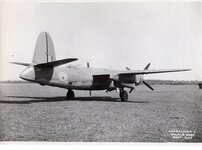 img739.jpg1.6 MB · Views: 131
img739.jpg1.6 MB · Views: 131 -
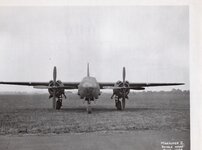 img740.jpg1.6 MB · Views: 139
img740.jpg1.6 MB · Views: 139 -
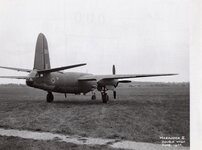 img741.jpg1.5 MB · Views: 140
img741.jpg1.5 MB · Views: 140 -
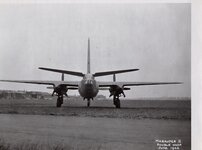 img742.jpg1.3 MB · Views: 112
img742.jpg1.3 MB · Views: 112 -
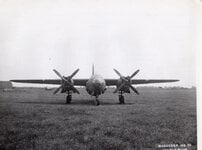 img743.jpg1.6 MB · Views: 137
img743.jpg1.6 MB · Views: 137 -
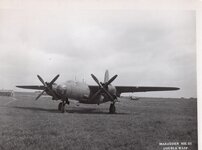 img744.jpg1.3 MB · Views: 136
img744.jpg1.3 MB · Views: 136 -
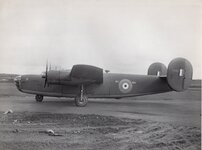 img746.jpg1.4 MB · Views: 124
img746.jpg1.4 MB · Views: 124 -
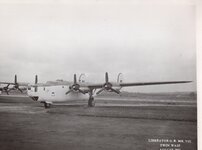 img747.jpg1.3 MB · Views: 145
img747.jpg1.3 MB · Views: 145 -
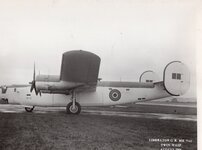 img748.jpg1.4 MB · Views: 142
img748.jpg1.4 MB · Views: 142 -
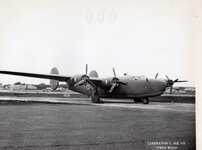 img749.jpg1.6 MB · Views: 136
img749.jpg1.6 MB · Views: 136 -
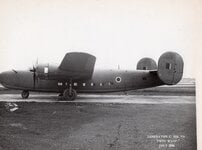 img750.jpg1.5 MB · Views: 156
img750.jpg1.5 MB · Views: 156
Oooo, some more!
so, in Post #20 we have some intriguing twins and we begin with a Baltimore I, which is probably AG691 (I got the caption wrong in my previous post, the serial should be the former, not AG837), the first Baltimore to the UK, which is probably the same aircraft in 710 through 712, the latter looking like its serial has been blotted out by the censor when the image is looked at closely. Note that it doesn't have a gun turret...
... As opposed to Image 714, which shows Baltimore III AG837 (there it is...) which was fitted with a Boulton Paul A Mk.V four X .303 inch gun turret, although devoid of guns. Before the United States began developing its own power turrets, which in Martin's case the concept of operation came directly from Boulton Paul, aircraft that went to Britain were delivered without turrets and local build weaponry was fitted, specifically Boulton Paul turrets, which almost all US aircraft that went to Britain that required power turrets were fitted with until US companies began supplying their own turrets. The Boulton Paul turret fitted to AG837 added considerable drag to the aircraft, resulting in 3 percent less range compared to without it. Note in image 713 a P-40 can be seen in the background on the left and on the right of the aircraft can be seen a Beaufort and Hurricane, and that the Baltimore IV in 715 through 717 is fitted with a lower drag Martin turret.
Images 718 through 721 are the same Hudson III V8977, with its Boulton Paul C. Mk.II mid-upper turret in situ. I don't have any info on when this aircraft arrived in the UK, but it was an early serial number among the first batch of 200 Hudsons ordered in May 1940 and is likely photographed at (Liverpool) Speke, where Lockheed had established a base for assembly and fitting prior to RAF service entry. Image 722 shows Hudson V AM746, a standard production variant that was delivered to the UK from the second contract for 390 aircraft. Neither of these aircraft were used by the A&AEE.
Images 723 and 724 are quite possibly the same Ventura I, note that it has either a metal extreme nose or the glazing has been painted over. It's likely that 725 through 728 are also the same Ventura II AE939, which was in the first contract for Venturas issued in June 1940, with this aircraft going to 464 Sqn, an Article XV squadron allocated to the Royal Australian Air Force, although operating in Europe under the auspices of the RAF. The RAAF received its own Venturas that were delivered direct to Australia. Can't say much about the GR.V, it is possibly FN956/G or FN957/G, which underwent weapons and performance trials respectively, at Boscombe Down in August 1943. Note its solid nose. The latter had amusing artwork on the rear fuselage aft of the turret on the right hand side, where Donald Duck holds a snake with the head of Hitler and says "It starts with the simple knots Adolf".
so, in Post #20 we have some intriguing twins and we begin with a Baltimore I, which is probably AG691 (I got the caption wrong in my previous post, the serial should be the former, not AG837), the first Baltimore to the UK, which is probably the same aircraft in 710 through 712, the latter looking like its serial has been blotted out by the censor when the image is looked at closely. Note that it doesn't have a gun turret...
... As opposed to Image 714, which shows Baltimore III AG837 (there it is...) which was fitted with a Boulton Paul A Mk.V four X .303 inch gun turret, although devoid of guns. Before the United States began developing its own power turrets, which in Martin's case the concept of operation came directly from Boulton Paul, aircraft that went to Britain were delivered without turrets and local build weaponry was fitted, specifically Boulton Paul turrets, which almost all US aircraft that went to Britain that required power turrets were fitted with until US companies began supplying their own turrets. The Boulton Paul turret fitted to AG837 added considerable drag to the aircraft, resulting in 3 percent less range compared to without it. Note in image 713 a P-40 can be seen in the background on the left and on the right of the aircraft can be seen a Beaufort and Hurricane, and that the Baltimore IV in 715 through 717 is fitted with a lower drag Martin turret.
Images 718 through 721 are the same Hudson III V8977, with its Boulton Paul C. Mk.II mid-upper turret in situ. I don't have any info on when this aircraft arrived in the UK, but it was an early serial number among the first batch of 200 Hudsons ordered in May 1940 and is likely photographed at (Liverpool) Speke, where Lockheed had established a base for assembly and fitting prior to RAF service entry. Image 722 shows Hudson V AM746, a standard production variant that was delivered to the UK from the second contract for 390 aircraft. Neither of these aircraft were used by the A&AEE.
Images 723 and 724 are quite possibly the same Ventura I, note that it has either a metal extreme nose or the glazing has been painted over. It's likely that 725 through 728 are also the same Ventura II AE939, which was in the first contract for Venturas issued in June 1940, with this aircraft going to 464 Sqn, an Article XV squadron allocated to the Royal Australian Air Force, although operating in Europe under the auspices of the RAF. The RAAF received its own Venturas that were delivered direct to Australia. Can't say much about the GR.V, it is possibly FN956/G or FN957/G, which underwent weapons and performance trials respectively, at Boscombe Down in August 1943. Note its solid nose. The latter had amusing artwork on the rear fuselage aft of the turret on the right hand side, where Donald Duck holds a snake with the head of Hitler and says "It starts with the simple knots Adolf".
Last edited:
More twins and the first quad in Post #22.
Ventura II AJ206 in image 730 possibly in October 1943, while under evaluation, was plucked out of a batch from the British contract that went to the USAAF as B-34s and the US Navy as PV-3s. Whilst under test it apparently suffered high unserviceability and was used for trialling rocket projectiles at the Aberporth range in Wales. Note the artwork on the fuselage side, this time Bugs Bunny; a common thing, apparently.
Images 731 through 733 are the same Havoc II AH522, which was originally ordered in October 1939 as a DB-7 through the British and French Purchasing Commission's joint order, the aircraft was converted to a Havoc night intruder on arrival in the UK. Of note are its flame dampers, its solid nose with its gun ports covered in doped fabric and its radar aerials in the extreme nose and under the wing, which, oddly have escaped the attention of the censor and were normally blotted out.
Image 734 shows Boston IIIa BZ330, an A-20C in US parlance, which was acquired under Lend-Lease, whereas the DB-7s were bought by the British and French. Can't say much else about it, but it appears to be a normal service example; it was not used in testing by the A&AEE. The next picture shows Boston V BZ581, the second of the Lend-Lease requisition for A-30K model aircraft, fitted with the Martin gun turret. Note it is wearing its USAAF number on its tail, 44-737 and it's fitted with a long-range belly tank, which looks like it's on its way somewhere, possibly continental Europe by that time.
Two views of Mitchell III HD373 in 736 and '7, which underwent weapons trials at Boscombe in August 1944, heavily armed with no less than eleven fifty cal machine guns, one in the nose, two package guns on each side, a twin Bendix turret mounting, one in each beam position and two in the tail, but nothing in the belly. Armement trials revealed that the Bendix turret worked fine, but spent shell casing collection was an issue with the turret.
Two images of Marauder I FK138, one of 51 "Army Release" B-26As that were sent to the Middle East via Prestwick, Scotland, to equip 14 Squadron in Egypt. In another image I have seen of this aircraft, its tail gun position has had the sloping glazed fairing removed and the gun fitted, with the glazed section only directly aft of the fin. Although this aircraft was not sent to the Boscombe for evaluation, the type's compass came up for criticism, as did the entry of exhaust gases into the crew positions, with adverse comments about the type's high landing speed being made. Thirteen of the first 70 delivered to the Middle East were lost in accidents. Note the Handley Page Hampden in the background, and another's fin to the right of the image.
Images 740 through 742 show Marauder II FB436, which was also flown to the Middle East, although the proportion of the Mk.IIs that were lost was lower. The Marauder IIs under trial revealed that the Martin turret was satisfactory but opening the lower hatches for the beam gunners made the fuselage very cold and firing the package guns on the aircraft's side vibrated the pilot's sight, although acceptable accuracy was attained using the ring and bead. In the background of 740 can be seen a host of biplanes, what look like Fairey Albacores and a barrage balloon to the left of the aircraft, with a Supermarine Sea Otter to the right, with a Typhoon to the right in image 741 and Spitfires to the left and more Sea Otters to the right of 742. Images 743 and 744 show a Marauder III, with a Spitfire in the background of both shots.
Image 746 shows B-24D 41-1087 as a yet unmarked Liberator III, possibly taken at Prestwick on delivery of the aircraft to the UK as it has no RAF serial number displayed, which was unusual; it's possible that it's LV338. Note that there is a puncture on the rear bomb bay wall where the door slides upwards. This was one of only eleven B-24Ds that arrived as emergency stock for operation by Coastal Command direct from the manufacturer without modification for RAF service. Images 747 and 748 show Liberator GR.VIII KG984, a standard Coastal Command variant, which served with 59, 220, and 224 Squadrons, spending its time in either windswept Northern Ireland or the windswept Outer Hebrides, Scotland. The final two images show Liberator C.VII EW615 at Prestwick, evidence of its USAAF serial on its fin, 43-39223.
Ventura II AJ206 in image 730 possibly in October 1943, while under evaluation, was plucked out of a batch from the British contract that went to the USAAF as B-34s and the US Navy as PV-3s. Whilst under test it apparently suffered high unserviceability and was used for trialling rocket projectiles at the Aberporth range in Wales. Note the artwork on the fuselage side, this time Bugs Bunny; a common thing, apparently.
Images 731 through 733 are the same Havoc II AH522, which was originally ordered in October 1939 as a DB-7 through the British and French Purchasing Commission's joint order, the aircraft was converted to a Havoc night intruder on arrival in the UK. Of note are its flame dampers, its solid nose with its gun ports covered in doped fabric and its radar aerials in the extreme nose and under the wing, which, oddly have escaped the attention of the censor and were normally blotted out.
Image 734 shows Boston IIIa BZ330, an A-20C in US parlance, which was acquired under Lend-Lease, whereas the DB-7s were bought by the British and French. Can't say much else about it, but it appears to be a normal service example; it was not used in testing by the A&AEE. The next picture shows Boston V BZ581, the second of the Lend-Lease requisition for A-30K model aircraft, fitted with the Martin gun turret. Note it is wearing its USAAF number on its tail, 44-737 and it's fitted with a long-range belly tank, which looks like it's on its way somewhere, possibly continental Europe by that time.
Two views of Mitchell III HD373 in 736 and '7, which underwent weapons trials at Boscombe in August 1944, heavily armed with no less than eleven fifty cal machine guns, one in the nose, two package guns on each side, a twin Bendix turret mounting, one in each beam position and two in the tail, but nothing in the belly. Armement trials revealed that the Bendix turret worked fine, but spent shell casing collection was an issue with the turret.
Two images of Marauder I FK138, one of 51 "Army Release" B-26As that were sent to the Middle East via Prestwick, Scotland, to equip 14 Squadron in Egypt. In another image I have seen of this aircraft, its tail gun position has had the sloping glazed fairing removed and the gun fitted, with the glazed section only directly aft of the fin. Although this aircraft was not sent to the Boscombe for evaluation, the type's compass came up for criticism, as did the entry of exhaust gases into the crew positions, with adverse comments about the type's high landing speed being made. Thirteen of the first 70 delivered to the Middle East were lost in accidents. Note the Handley Page Hampden in the background, and another's fin to the right of the image.
Images 740 through 742 show Marauder II FB436, which was also flown to the Middle East, although the proportion of the Mk.IIs that were lost was lower. The Marauder IIs under trial revealed that the Martin turret was satisfactory but opening the lower hatches for the beam gunners made the fuselage very cold and firing the package guns on the aircraft's side vibrated the pilot's sight, although acceptable accuracy was attained using the ring and bead. In the background of 740 can be seen a host of biplanes, what look like Fairey Albacores and a barrage balloon to the left of the aircraft, with a Supermarine Sea Otter to the right, with a Typhoon to the right in image 741 and Spitfires to the left and more Sea Otters to the right of 742. Images 743 and 744 show a Marauder III, with a Spitfire in the background of both shots.
Image 746 shows B-24D 41-1087 as a yet unmarked Liberator III, possibly taken at Prestwick on delivery of the aircraft to the UK as it has no RAF serial number displayed, which was unusual; it's possible that it's LV338. Note that there is a puncture on the rear bomb bay wall where the door slides upwards. This was one of only eleven B-24Ds that arrived as emergency stock for operation by Coastal Command direct from the manufacturer without modification for RAF service. Images 747 and 748 show Liberator GR.VIII KG984, a standard Coastal Command variant, which served with 59, 220, and 224 Squadrons, spending its time in either windswept Northern Ireland or the windswept Outer Hebrides, Scotland. The final two images show Liberator C.VII EW615 at Prestwick, evidence of its USAAF serial on its fin, 43-39223.
Escuadrilla Azul
Tech Sergeant
- 2,118
- Feb 27, 2020
Very nice photos, thanks for sharing.Hey, all.
I've got a couple hundred pixs taken by the British Air Ministry in the 1940s . These Include American, British, and German planes. Civil and military.
Here's twenty to start . If you like these I'll upload the rest. Let me know !
In the first one of the Mustang, the aircraft have underwing cannons like the Hurricane Mk.IID. Never know that it was trialed. I guess it wasn't put in to service, or was it?
Escuadrilla Azul
Tech Sergeant
- 2,118
- Feb 27, 2020
Post #13:
Images 689 to 691 are Vengeance II AN609, which was at Boscombe in November 1942 692 and 693 are of Vengeance IV FD118, with its USAAF serial 41-31258 visible on its fin, note the barrage balloon in the background in 693. 694 to 696 shows Vengeance IV FD243, which had US-built flame dampers, which proved ineffective during trials in April 1944.
Images 700 and 701 are likely to be Kingfisher FN656, trialled as a landplane in April 1942, images 702 and 703 show Catalina IIA VA703 of 209 Sqn photographed at Pembroke dock, it was formerly an RCAF aircraft, serial No.9703. Note how the background is obviously blotted out. 704 and 705 show Vigilant HL429, the first of four of the type to undergo trials in October 1941.
Image 706 shows Mariner I JX103 photographed at Saunders Roe, Beaumaris in October 1943, 707 and 708 show a Chesapeake I, with a B-17E or Fortress I in the background of 708. Image 709 shows the first Baltimore I to arrive in the UK, AG837, at Boscombe in February 1942.
Master_Ale_88
Airman
Amazing pics nuuumannn!! At the beginning you even asked if anyone would have liked them to load further ones...But I wonder who couldn't have appreciated! Thanks for sharing!!!
Nice shots!
Amazing pics nuuumannn!!
Thanks, man, but they're not my pictures, they're Tieleader's, I just go through the books and stuff because I'm weird like that
Hi, according to my Putnam's Aircraft of the RAF by Thetford, 20 Mariners were used by 524 Sqn at Oban, Scotland, but they didn't see service entry officially, or some such ambiguous wording.Did the Mariner went in to service with the RAF?
Escuadrilla Azul
Tech Sergeant
- 2,118
- Feb 27, 2020
Thanks. I never know about that. Kind of weird to me that the RAF considered the Mariner for duty. It was a great PB for sure, but I thougt that RAF got enough Sunderlands, Catalinas and Liberators for LR patrol.Hi, according to my Putnam's Aircraft of the RAF by Thetford, 20 Mariners were used by 524 Sqn at Oban, Scotland, but they didn't see service entry officially, or some such ambiguous wording.
I guess it wasn't put in to service, or was it?
Not on the Mustang, no; that particular aircraft was also involved in rocket trials as well as the gunnery trials, as stated earlier, the results compared favourably with Hurricanes using the guns, with top speed being reduced by 17 mph (TAS), but range was scarcely affected. AM106/G was also used for clearing 14 different stores from the Universal Bomb Carrier, with 500 lb bombs, aileron control was poor at low speed and another aircraft AM130/G lost a drastic 68 mph (TAS) in top speed with rocket rails and fittings, attributed to the drag from the blast plates and the rails (I'm reminded of the nincompoop who suggested that placing a Fat Man atom bomb below a Lancaster and removing its top turret would be sufficient drag compensation that the Fat Man's impact would be minimal on the aircraft's performance...), but handling was unaffected. A different set of rails by another firm reduced Mustang's top speed by 53 mph (TAS), still substantial, but not as much, although a different aircraft was used.
It was a great PB for sure, but I thougt that RAF got enough Sunderlands, Catalinas and Liberators for LR patrol.
True, but the problem wasn't types of aircraft, but number; having more increased the ability to do the job and the USA was a goldmine of aircraft production that with Lend-Lease the British were able to tap into, exactly why more Mariners were not acquired is a mystery, perhaps Coastal Command had sufficient Catalinas? Coastal Command used a variety of types, from Whitleys, Wellingtons, Warwicks, Halifaxes and received Fortresses from the USA as well, which remained in service right to the end of the war. I can't find anything that suggested it was inadequate in any way. Another source states that the Mariner's handling received mixed comments while under evaluation by the MA&AEE, Mariner I JX103/G was evaluated at Helensburgh for four months, there was an imbalance between the flight controls, the rudder being light and sensitive and the ailerons were considered unusually small and were slow to respond. The Elevators required a huge amount of effort to move, measurements on strain gauges registered 260lb/g, but the elevator trim was found to be very sensitive. Consolidated Coronados were also evaluated.
- Thread starter
- #35
twenty more.
Attachments
-
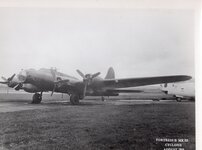 img751.jpg1.4 MB · Views: 151
img751.jpg1.4 MB · Views: 151 -
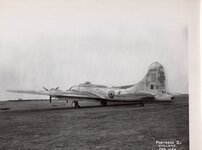 img752.jpg1.1 MB · Views: 146
img752.jpg1.1 MB · Views: 146 -
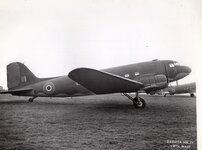 img753.jpg1.8 MB · Views: 137
img753.jpg1.8 MB · Views: 137 -
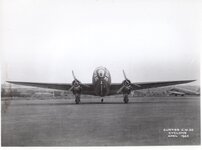 img754.jpg1.1 MB · Views: 127
img754.jpg1.1 MB · Views: 127 -
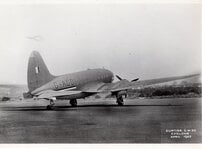 img755.jpg1.5 MB · Views: 127
img755.jpg1.5 MB · Views: 127 -
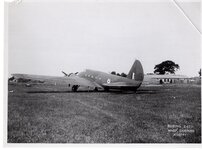 img756.jpg2 MB · Views: 120
img756.jpg2 MB · Views: 120 -
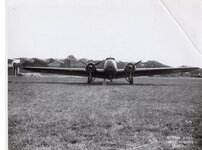 img757.jpg2.3 MB · Views: 116
img757.jpg2.3 MB · Views: 116 -
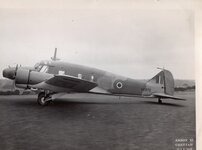 img758.jpg1.1 MB · Views: 135
img758.jpg1.1 MB · Views: 135 -
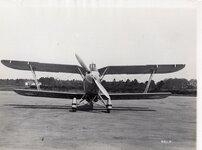 img759.jpg1.6 MB · Views: 151
img759.jpg1.6 MB · Views: 151 -
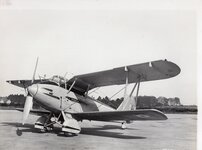 img760.jpg1.3 MB · Views: 133
img760.jpg1.3 MB · Views: 133 -
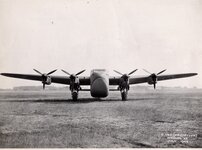 img761.jpg1.6 MB · Views: 149
img761.jpg1.6 MB · Views: 149 -
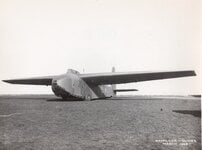 img762.jpg1.6 MB · Views: 133
img762.jpg1.6 MB · Views: 133 -
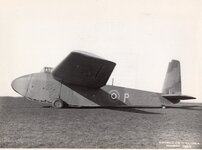 img763.jpg1.7 MB · Views: 135
img763.jpg1.7 MB · Views: 135 -
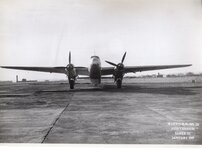 img764.jpg1.5 MB · Views: 139
img764.jpg1.5 MB · Views: 139 -
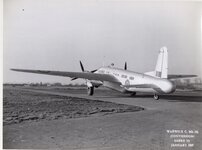 img765.jpg1.4 MB · Views: 127
img765.jpg1.4 MB · Views: 127 -
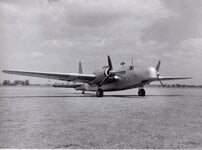 img766.jpg1.8 MB · Views: 141
img766.jpg1.8 MB · Views: 141 -
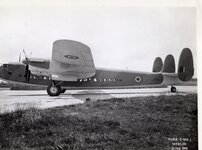 img767.jpg1.8 MB · Views: 133
img767.jpg1.8 MB · Views: 133 -
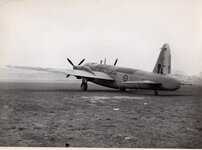 img768.jpg1.3 MB · Views: 121
img768.jpg1.3 MB · Views: 121 -
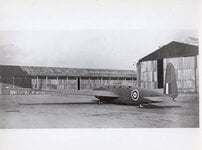 img769.jpg1.4 MB · Views: 144
img769.jpg1.4 MB · Views: 144 -
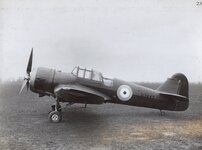 img770.jpg1.4 MB · Views: 132
img770.jpg1.4 MB · Views: 132
Escuadrilla Azul
Tech Sergeant
- 2,118
- Feb 27, 2020
Guuaaauuu! A reduction of 68mph in top speed is quite a lot. Even 53 mph are much. I don't remember that the Typhoon lost that much but obviously I can be wrong.Not on the Mustang, no; that particular aircraft was also involved in rocket trials as well as the gunnery trials, as stated earlier, the results compared favourably with Hurricanes using the guns, with top speed being reduced by 17 mph (TAS), but range was scarcely affected. AM106/G was also used for clearing 14 different stores from the Universal Bomb Carrier, with 500 lb bombs, aileron control was poor at low speed and another aircraft AM130/G lost a drastic 68 mph (TAS) in top speed with rocket rails and fittings, attributed to the drag from the blast plates and the rails (I'm reminded of the nincompoop who suggested that placing a Fat Man atom bomb below a Lancaster and removing its top turret would be sufficient drag compensation that the Fat Man's impact would be minimal on the aircraft's performance...), but handling was unaffected. A different set of rails by another firm reduced Mustang's top speed by 53 mph (TAS), still substantial, but not as much, although a different aircraft was used.
- Thread starter
- #38
twenty more.
Attachments
-
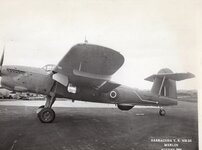 img771.jpg1.5 MB · Views: 125
img771.jpg1.5 MB · Views: 125 -
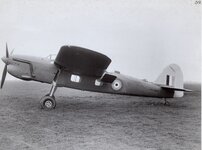 img772.jpg1.5 MB · Views: 112
img772.jpg1.5 MB · Views: 112 -
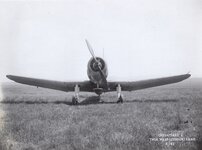 img773.jpg1.9 MB · Views: 109
img773.jpg1.9 MB · Views: 109 -
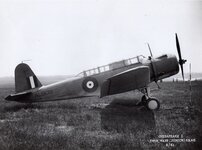 img774.jpg2 MB · Views: 115
img774.jpg2 MB · Views: 115 -
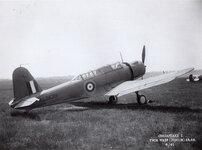 img775.jpg1.9 MB · Views: 116
img775.jpg1.9 MB · Views: 116 -
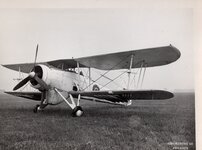 img776.jpg1.4 MB · Views: 120
img776.jpg1.4 MB · Views: 120 -
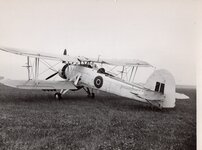 img777.jpg1.5 MB · Views: 110
img777.jpg1.5 MB · Views: 110 -
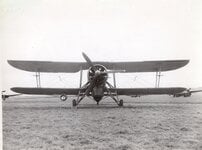 img778.jpg1.7 MB · Views: 115
img778.jpg1.7 MB · Views: 115 -
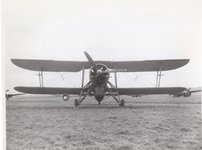 img779.jpg1.6 MB · Views: 112
img779.jpg1.6 MB · Views: 112 -
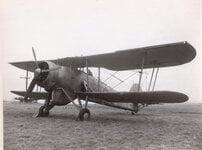 img780.jpg1.5 MB · Views: 112
img780.jpg1.5 MB · Views: 112 -
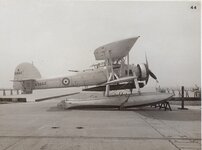 img781.jpg1.3 MB · Views: 116
img781.jpg1.3 MB · Views: 116 -
 img782.jpg1.3 MB · Views: 116
img782.jpg1.3 MB · Views: 116 -
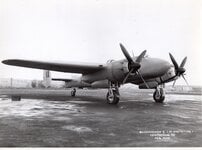 img783.jpg1.4 MB · Views: 120
img783.jpg1.4 MB · Views: 120 -
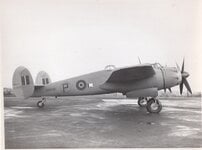 img784.jpg1.1 MB · Views: 118
img784.jpg1.1 MB · Views: 118 -
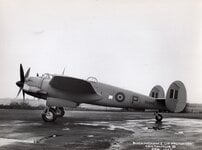 img785.jpg1.2 MB · Views: 112
img785.jpg1.2 MB · Views: 112 -
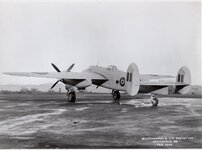 img786.jpg1.4 MB · Views: 120
img786.jpg1.4 MB · Views: 120 -
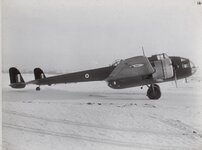 img787.jpg927.5 KB · Views: 118
img787.jpg927.5 KB · Views: 118 -
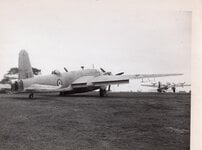 img788.jpg1.4 MB · Views: 117
img788.jpg1.4 MB · Views: 117 -
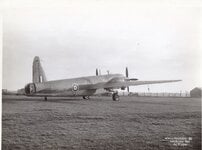 img789.jpg1.7 MB · Views: 122
img789.jpg1.7 MB · Views: 122 -
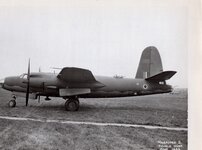 img790.jpg1.7 MB · Views: 127
img790.jpg1.7 MB · Views: 127
Old Wizard
2nd Lieutenant
Users who are viewing this thread
Total: 1 (members: 0, guests: 1)
Similar threads
- Replies
- 4
- Views
- 499
